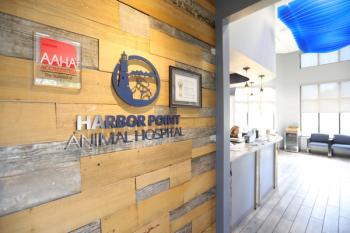
AVMA frustrated by bureaucracy that hinders emergency response
Schaumburg, Ill. — As the government faces accusations it was wildly out of touch on Katrina, the American Veterinary Medical Association (AVMA) joins the list of concerned parties seeking after-the-fact answers from federal officials.
SCHAUMBURG, ILL. — As the government faces accusations it was wildly out of touch on Katrina, the American Veterinary Medical Association (AVMA) joins the list of concerned parties seeking after-the-fact answers from federal officials.
AVMA's foundation funds Veterinary Medical Assistance Teams (VMAT), volunteer veterinarians deployed by the Federal Emergency Management Agency (FEMA) on missions to handle animal disasters. Yet the association, which contracts with the government on VMATs, reports initial communication was muddled as well as data concerning impacted practitioners. Not only were the four VMATs deployed with questionable efficiency, AVMA officials say, association leaders were barred initially from speaking with the teams.
"We've noticed something's different in the way VMATs are being handled," says Dr. Cindy Lovern, AVMA assistant director of emergency preparedness and response. "What AVMA would like to see is someone within the government specifically assigned to deal with veterinary issues."
Communications freeze
What Lovern describes as "frustration" likely stems from the changing structure of FEMA when the terrorism-focused Department of Homeland Security (DHS) swallowed the small, stand-alone agency. When pressed, FEMA public affairs officials offered no insight as to why VMAT communication was halted. DHS representatives did not return phone calls to DVM Newsmagazine seeking comment.
AVMA contends VMATs, reportedly deployed at least two days late to disaster areas, initially were instructed not to talk to press. The veterinarians who leave jobs and homes to selflessly offer disaster relief were threatened with removal from their teams, Lovern says.
A month after the storm, VMAT member Dr. Jim Hamilton reveals very few FEMA officials understand their objective.
"The VMAT mission is to support animal healthcare infrastructure of the affected region, help the department of agriculture to manage the myriad of animals and volunteers who come in and try to have a positive impact," he says.
Layers of bureaucracy
Criticism regarding deployment of units has emerged, too. Louisiana State University (LSU) was fielding close to 1,000 displaced animals days after the storm, yet officials could not rely on VMAT aid during the veterinary school's initial recovery efforts.
"I hate to be critical, but I can tell you the major lifting is being done by three groups of people, and none of them are VMATs," veterinary school Dean Dr. Michael Groves says. "They come for a day, and then they're gone. It's a sad situation that is draining our manpower and our coffers."
As the response efforts progressed, Grove's position softened on VMAT participation.
Where are they?
AVMA provides the majority of funding for VMATs, but unit deployments are at the government's mercy, Lovern says. On Sept. 9, VMATs reportedly were stationed at the New Orleans airport, Lamar-Dixon Equine Expo Center in Gonzales, La., Gulfport, Miss., and Hattiesburg, Miss. A few members also were re-stationed at LSU's temporary shelter center.
Dr. Susan Eddleston, assistant professor in the LSU School of Veterinary Medicine, says the back-and-forth of VMAT teams initially was "frustrating." While Eddleston, faculty, students and others work around the clock fielding and treating animals, they've learned they can't hand the reins to VMAT volunteers.
"There's so much red tape, we've kind of given up on them," she says. "We had the impression they'd come in one day and take over, but we're pretty much on our own. We don't want to lose those who've come back, but it's not a big force here. I personally have lost confidence. I don't understand how VMATs work."
Situation assessment
AVMA plans to answer those questions and more as it explores the length of time it took for VMATs on standby to be deployed. While AVMA's power to iron out future VMAT operations remains to be seen, the association "can be very influential" considering the group represents 87 percent of all U.S. veterinarians, Lovern says. AVMA also relies on a memorandum of understanding with the federal government that gives the association the authority to coordinate VMATs. That document currently is under DHS review.
"The memorandum is legitimate," Lovern says. "AVMA will be assessing the situation so we can address the program to make it stronger in conjunction with Homeland Security. This is definitely a high priority for us."
Newsletter
From exam room tips to practice management insights, get trusted veterinary news delivered straight to your inbox—subscribe to dvm360.





